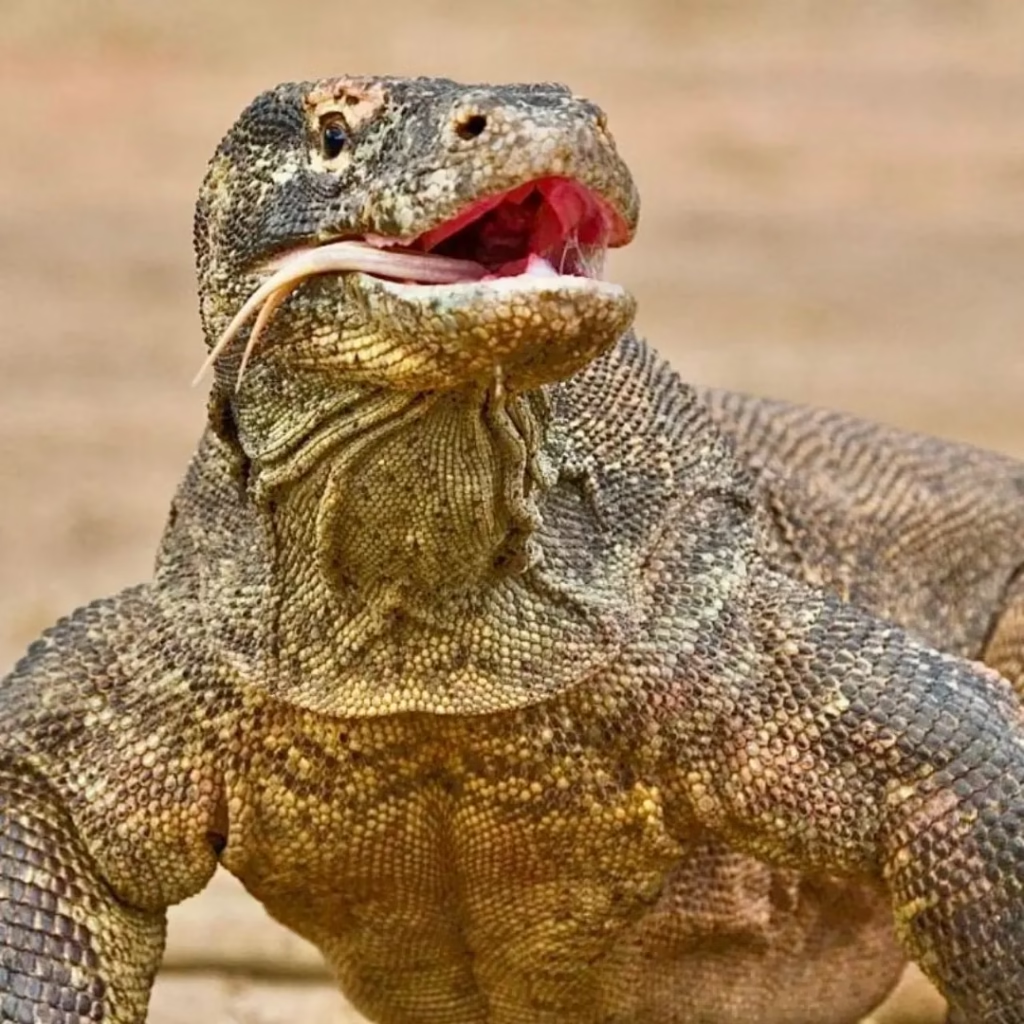Komodo Dragon: The Legendary Giant of Indonesia
The Komodo dragon is one of the most fascinating creatures on Earth. Known as the world’s largest living lizard, this powerful reptile roams freely on a handful of islands in Indonesia, including Komodo, Rinca, Gili Motang, and Flores. With their prehistoric appearance and predatory skills, Komodo dragons attract scientists, wildlife enthusiasts, and travelers from around the globe.
In this comprehensive guide, we’ll uncover Komodo dragon facts, their habitat, diet, size, behavior, and safety tips for encountering them. We’ll also explain how you can see these incredible animals in their natural environment when visiting Komodo Island tours.
Komodo Dragon Facts at a Glance
- Scientific name: Varanus komodoensis
- Average length: 2–3 meters (6–10 feet)
- Weight: Up to 90 kg (200 lbs) in the wild
- Lifespan: 30–50 years
- Habitat: Komodo, Rinca, Gili Motang, Flores
- Diet: Carnivorous — from small animals to buffalo
- Status: Endangered (IUCN Red List)
Where Do Komodo Dragons Live?
The Komodo dragon habitat is limited to just five Indonesian islands: Komodo, Rinca, Gili Motang, Flores, and Padar (though Padar no longer has a stable dragon population). These islands are part of the Komodo National Park, a UNESCO World Heritage Site. Their environment is typically dry savanna with scattered forests and hills, making it easier for them to hunt prey.
If you’re wondering “Where can I see a Komodo dragon?” the answer is straightforward: the best places are Komodo Island and Rinca Island. Guided trekking tours led by rangers allow travelers to safely witness these predators in the wild.
How Big Is a Komodo Dragon?
One of the most asked questions is “How big is a Komodo dragon?” These reptiles are the largest lizards alive today, growing up to 3 meters (10 feet) in length and weighing over 90 kilograms (200 pounds). Males are generally larger than females. Their size, combined with sharp claws, strong jaws, and muscular tails, makes them formidable predators.
Komodo Dragon Diet and Hunting Skills
The Komodo dragon diet consists of deer, wild boar, water buffalo, and even smaller Komodo dragons. They are opportunistic carnivores and scavengers. One remarkable fact is their ability to consume up to 80% of their body weight in a single meal.
Komodo dragons hunt with a unique method. They can sprint in short bursts and deliver a powerful bite. Once bitten, the prey often weakens due to venom and bacterial infection. The dragon then tracks the wounded animal until it collapses, sometimes following it for several kilometers.
Are Komodo Dragons Dangerous to Humans?
Another common question is “Are Komodo dragons dangerous?” The answer is yes — they are apex predators capable of killing animals much larger than themselves. While attacks on humans are rare, they can be fatal. This is why all Komodo Island tours include mandatory ranger guidance. Rangers understand dragon behavior and ensure that visitors keep a safe distance.
Safety tips when visiting Komodo Island:
- Always follow ranger instructions.
- Do not wander off alone.
- Keep a safe distance — at least 5 meters away.
- Avoid sudden movements that may provoke the dragon.
- Women on their period should notify rangers, as Komodo dragons have a strong sense of smell.
Komodo Dragon Behavior
Komodo dragons are solitary hunters, but they gather when food is abundant. Despite their slow walking pace, they can run up to 20 km/h (12 mph) in short bursts. They are also excellent swimmers and can move between islands. Juveniles often live in trees to avoid being eaten by adults, while adults prefer open landscapes.
Komodo Dragon Reproduction
Komodo dragons usually breed between May and August. After mating, females lay 15–30 eggs in September, often in nests dug into the ground. The incubation period lasts about 8 months, with hatchlings emerging in April. Interestingly, Komodo dragons are capable of parthenogenesis (asexual reproduction), which means females can produce offspring without mating.
Komodo Dragon Conservation Status
The Komodo dragon conservation status is listed as Endangered on the IUCN Red List. With fewer than 3,000 individuals left in the wild, conservation is critical. The Indonesian government enforces strict protection within Komodo National Park, limiting visitor numbers and ensuring habitat preservation.
Travel Guide: How to See Komodo Dragons
If seeing a Komodo dragon in its natural environment is on your bucket list, here’s what you need to know:
Best Places to See Komodo Dragons
- Komodo Island: The most famous spot, often visited on day trips and liveaboard cruises.
- Rinca Island: Smaller and less crowded, but also home to many dragons.
- Flores Island: Some dragons live in the wild here, though sightings are rarer.
Best Time to Visit
The best time to see Komodo dragons is during the dry season from April to December, when weather conditions are favorable for trekking. The rainy season (January–March) brings lush greenery but can make hiking trails more difficult.
How to Get There
The gateway to Komodo National Park is Labuan Bajo on Flores Island. From there, travelers take boats or liveaboard cruises to Komodo or Rinca. Flights to Labuan Bajo are available daily from Bali, Jakarta, and other Indonesian cities.
Komodo Dragons and Local Culture
Locals in Komodo Island have lived alongside dragons for centuries. Legends describe the Komodo dragon as the “brother” of the island’s people. This cultural connection has helped foster respect and conservation efforts, as villagers see the dragons as part of their heritage.
Komodo Dragon: A True Living Fossil
The Komodo dragon is often called a “living fossil” because its lineage dates back millions of years. Encountering this creature is like stepping into a prehistoric world, reminding us of Earth’s ancient past.
Conclusion
The Komodo dragon is not just a reptile — it is a symbol of survival, evolution, and Indonesia’s unique biodiversity. Whether you are a wildlife lover, photographer, or adventurer, seeing a Komodo dragon in its natural environment is an unforgettable experience.
🌍 Ready to meet the dragons? Plan your trip to Komodo Island tours today and witness one of the world’s most extraordinary creatures up close.
MMB KOMODO TOUR
MMB Komodo Tour is your trusted local travel partner for unforgettable adventures in Komodo National Park and beyond. Based in Labuan Bajo, Flores, we specialize in Komodo Island tours, offering a wide range of curated packages such as Komodo tour 3 days 2 nights, private boat charters, open trips, and luxury cruises. Whether you’re a solo traveler, couple, family, or group, MMB Komodo Tour provides safe, comfortable, and well-organized tours with experienced local guides. Get in touch for more informations.
Our most popular package, the Komodo tour 3D2N, takes you to the most iconic spots in the park, including Padar Island, Komodo Island, Pink Beach, Manta Point, and more. Enjoy snorkeling in crystal-clear waters, hiking to panoramic viewpoints, and meeting the legendary Komodo dragons all from the comfort of our traditional Phinisi boats or modern speedboats.
At MMB Komodo Tour, we prioritize authentic experiences, local sustainability, and guest satisfaction. We work closely with local communities and licensed guides to ensure every journey is both memorable and respectful of nature and culture.
With flexible booking options, transparent pricing, and a commitment to excellent service, MMB Komodo Tour is here to make your dream trip come true. Whether you’re looking for a Komodo Island private boat tour, a budget-friendly open trip, or a tailor – made Flores adventure, we’ve got the perfect package for you.

